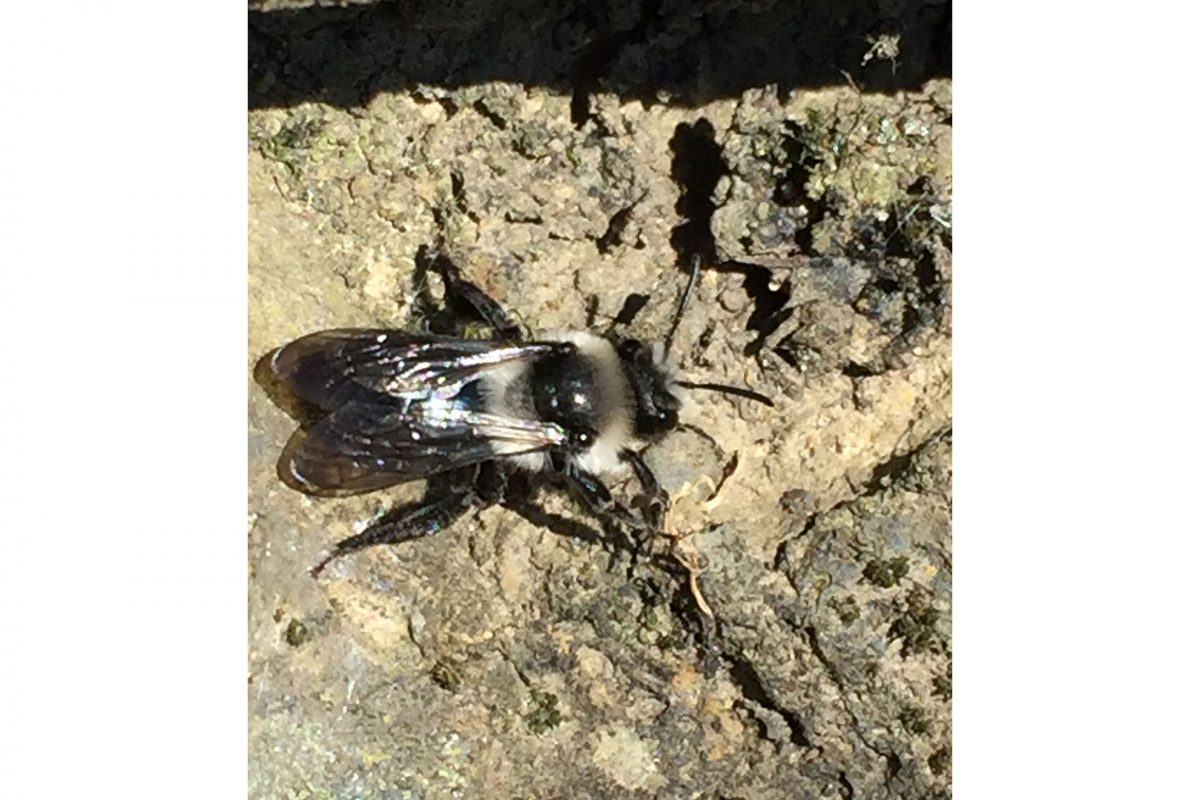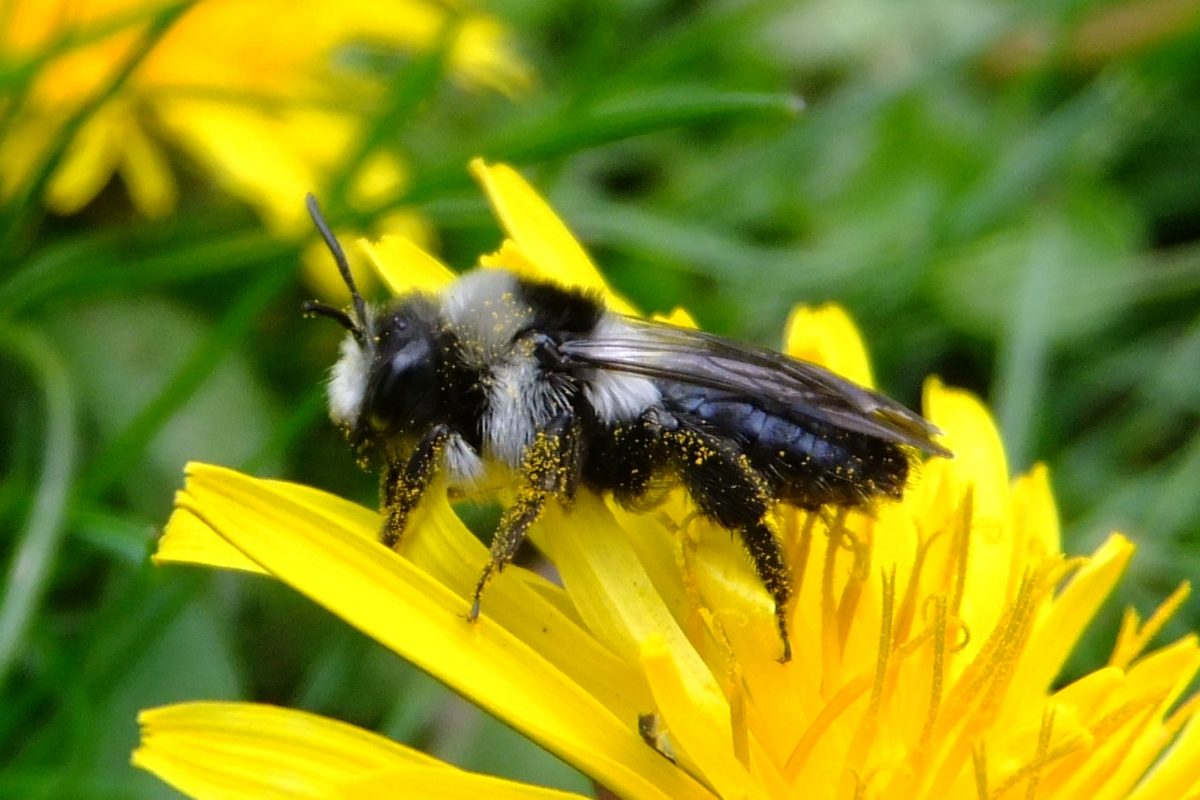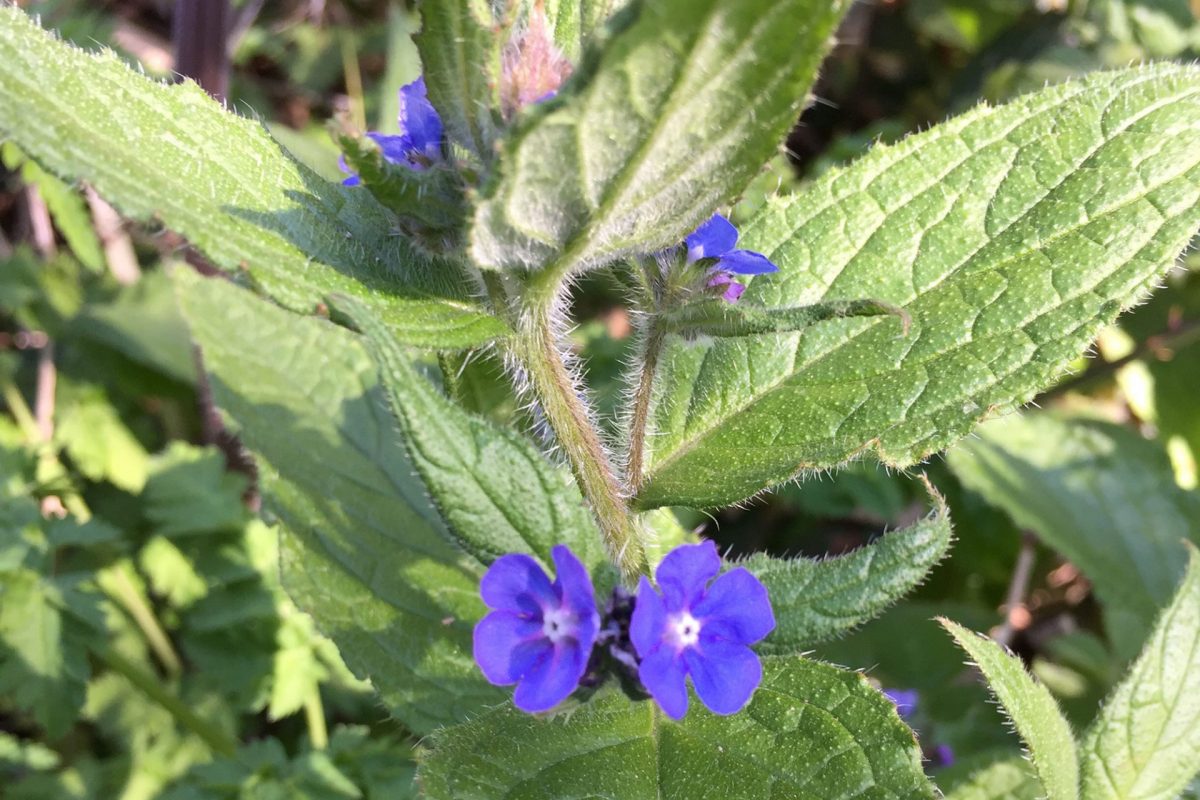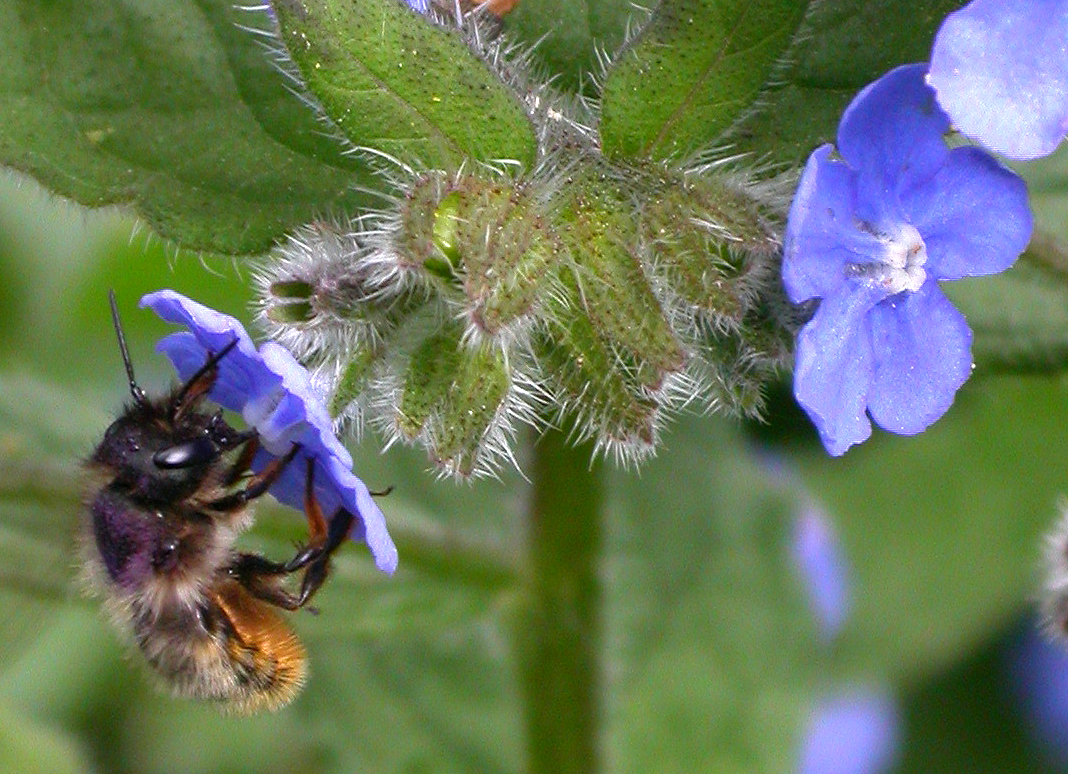Due to the dry cold breezy weather, flowers and insects seem to be reluctant to emerge this year. But there is still a lot to see.
As I was walking into the entrance to the Horniman Gardens on the main road last week, I noticed some large, rather smart, dark bees buzzing around the wall lining the path. One was kind enough to settle and allow me to take a photo. I am pretty sure it is an Ashy mining bee (Andrena cineraria), but it is certainly a mining bee of some sort.


There are 270 species of bees in the UK. One of these is the honey bee (Apis mellifera) which seems to get a disproportionate amount of attention.
24 (or thereabouts) are bumblebees (Bombus spp). The rest are the so-called solitary bees who do not have a social structure or a communal nest. But some, like the mining bees I saw, will often nest close to each other.
The ones I saw were females, looking for some soft earth or gaps in the mortar of the wall to make a burrow to lay their eggs. Mining bees like bare earth, and their nest entrances form what look like tiny volcanoes of excavated earth in lawns.
The solitary bees may be even more effective pollinators than bumblebees, as they don’t efficiently pack their pollen into ‘pollen baskets’ the hairy structures which bumblebees and honey bees have on their hind legs. When they land on a flower, the pollen gets all over their very hairy bodies, which suits the flowers fine as more will be transported to the next flower the bee visits.

As well as being brilliant pollinators, mining bees aerate the soil with their burrowing, so are definitely one of the many gardener’s friends.
Those of us who don’t like pain will be pleased to note that their sting is very mild and often does not even penetrate the skin. It only scores 1 on the Schmidt Sting Pain Index, a scale devised by the Arizonan entomologist Justin Schmidt.
Our bumblebee and wasps score 2, which is quite painful enough, in my view.
The top score (4) is shared by a sinister looking South American wasp (Synoeca septentrionalis) and the bullet ant (Paraponera clavata) also from Central and South America, whose sting is described by victims as, “waves of burning throbbing all-consuming pain that combines unabated for up to 24 hours”. If that’s not enough it can cause temporary paralysis and bleeding from the gut.
Apparently some of the Sateré-Mawé people of Brazil make their warriors-in training endure an initiation ceremony involving wearing a glove stitched into which are 80 of these insects. Easy enough, the braver of you might say, but they have to repeat this ordeal twenty times over several months!! And to think I thought my school violin lessons were unbearable…
I have not, as yet, found any bullet ants on the Nature Trail or Horniman Gardens. Nor any Synoeca wasps. So you can all walk around quite happily looking for the mild mining wasps and other furry solitary bees.
The best way to find them is don’t assume all the things that look superficially like honey bees are honey bees. Look closely, if you can, and you will discover the world of solitary bees. Steven Falk, co-author of the standard field guide to UK and Ireland’s bees, has a marvellous collection of high definition photos on Flickr which will help you to identify them if you manage to get a close enough look.
Lastly, if greyish bees are not your cup of tea, here’s something which most people walking the trail should be able to find.



I love this flower, the blue is so clear and bright and contrasts so smartly with green of its furry oval leaves.
It’s the green alkanet (Pentaglottis sempervirens). Sempervirens means always living or evergreen, and refers to the plant’s long flowering season. Apparently, that is where the green in its name comes from – it’s a contraction of evergreen. Now widespread in the UK, it was introduced by gardeners from its Mediterranean origins, and started to escape into the wild in the 1720s. It belongs to the borage family, and prefers damp shady places with alkaline soils.
It lines the path, making a beautiful display all spring and summer contrasting nicely with the white of the cow parsley. More importantly though it offers food for the Nature Trail’s hoverflies and bees.
Look out for hairy-footed flower bees (Anthophora plumipes), common carder bees (Bombus pascuorum) and buff-tailed bumblebees (Bombus terrestris) all of which are around now and will be followed by many more as the days get warmer.
Happy bee-watching!
Main image: Bee on green alkanet thanks to Nigel Jones CC BY-NC-ND 2.0 via Flickr


